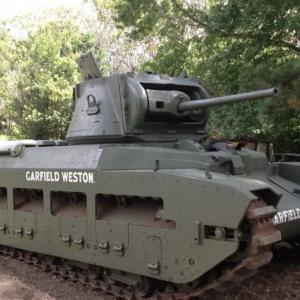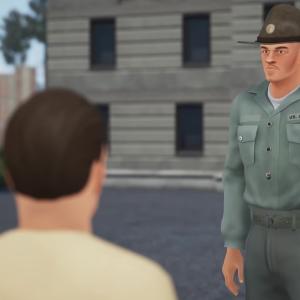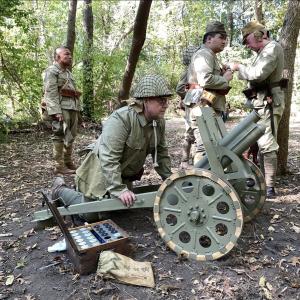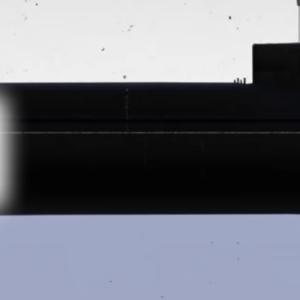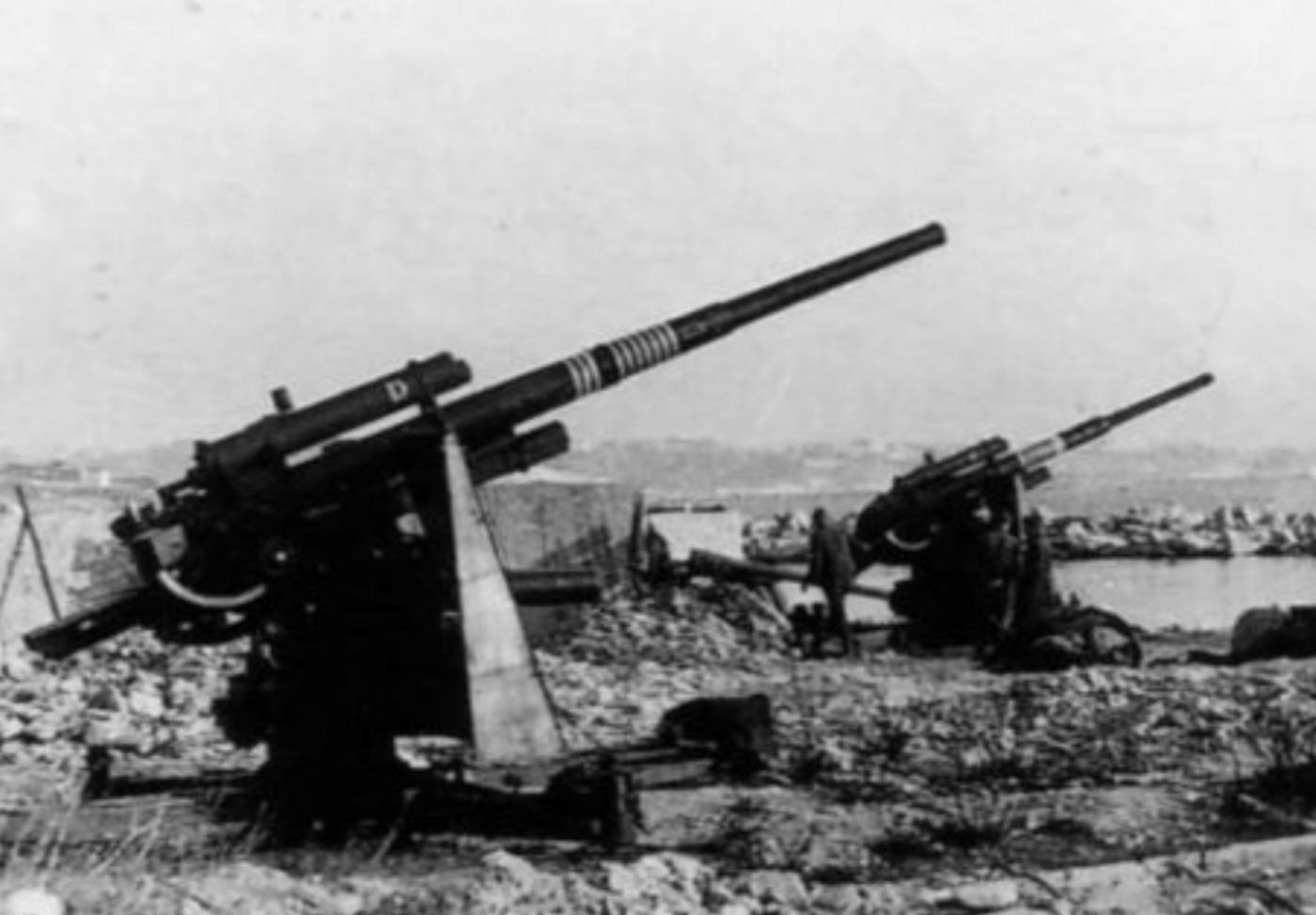
88mm German Flak Gun
The 8.8 cm Flak gun, commonly referred to as the “eighty-eight,” was one of Nazi Germany’s most formidable and versatile weapons during World War II. Originally designed as a high-altitude anti-aircraft gun, it rapidly evolved into a potent multi-role weapon, feared especially for its devastating effectiveness against Allied tanks. Its adaptability, superior engineering, and destructive power made it a battlefield icon and a central piece of the German Wehrmacht’s artillery arsenal.
The 8.8 cm Flak gun was designed by the German arms manufacturer Krupp, one of the country’s most important arms producers during the war. The design process was led by engineers who sought to develop a high-velocity anti-aircraft gun capable of dealing with fast and high-flying targets, a critical need as the Luftwaffe faced increasing Allied air superiority. The manufacturing of the Flak 88 was primarily handled by both Krupp and Rheinmetall, which was responsible for the gun's production, testing, and refinement. These companies played a crucial role in mass-producing the weapon, making it one of the most well-known artillery pieces in military history.
The initial version, the Flak 18, was introduced in 1933 and featured a semi-automatic breech mechanism that enabled a sustained firing rate of 15–20 rounds per minute. It fired high-velocity 88mm shells and could engage targets at altitudes up to 8,000 meters. Mounted on a dual-axle trailer, it was transportable but heavy, weighing approximately 7 tons.
The subsequent Flak 36 improved upon its predecessor with a more robust and easily deployed mounting system. Engineers replaced the earlier trailer with the Sonderanhänger 202, allowing the gun to fire directly from its traveling carriage—greatly reducing setup time and improving its ability to counter fast-moving enemy armor on the ground. Despite a similar rate of fire and weight, the Flak 36 was more efficient in field conditions and quickly became the primary heavy flak weapon used by German forces.
Further refinements were made in the Flak 37, which introduced improved fire-control systems. The addition of the Übertragungser 37, a data transmission system, allowed gun crews to coordinate better and respond faster to incoming aerial threats. Though its core specifications remained the same, this model saw enhanced integration within anti-aircraft batteries, making it more precise and reliable in combat.
A significant leap in performance came with the Flak 41, developed by Rheinmetall-Borsig. This variant featured a longer barrel (72 calibers) and used a more powerful 88×855R mm cartridge. With a higher muzzle velocity of up to 1,000 meters per second, the Flak 41 dramatically extended both range and ceiling—capable of reaching targets at altitudes over 11,000 meters and hitting ground targets at distances up to 14,700 meters. Its increased firepower came with maintenance challenges, and only limited numbers were produced. Nonetheless, it was among the most advanced artillery pieces fielded by any side during the war.
While initially conceived as an anti-aircraft gun, the 88mm Flak quickly proved its exceptional utility in the anti-tank role. Its high velocity and armor-piercing rounds made it capable of penetrating even the thickest armor of British, American, and Soviet tanks at long range. In early combat during the Spanish Civil War and the invasion of France in 1940, German commanders observed its lethal efficiency and began integrating it into frontline ground units.
During the Battle of France, 88mm guns were used to decimate French bunkers and destroy tanks with ease. Reports indicate that over 150 tanks and 150 bunkers were taken out by Flak units. One of the gun's defining moments came in the North African campaign. Under the command of General Erwin Rommel, the Afrika Korps made extensive use of the 88mm to engage British armor at long distances, often before enemy tanks could return fire. In 1941 alone, over 260 British tanks were destroyed by these guns in North Africa.
The gun’s battlefield flexibility led to further adaptations. Some were mounted on tracked vehicles or half-tracks, transforming the flak gun into a mobile tank destroyer. These adaptations, such as the Sd.Kfz. 8 “Bunkerknacker,” allowed German forces to reposition the gun quickly, keeping pace with fast-moving engagements on the Eastern Front and in desert warfare.
In the anti-aircraft role, the 88mm Flak was incredibly effective throughout the war, especially against bombers and high-flying aircraft. The gun was capable of firing various types of shells designed for different targets. For anti-aircraft purposes, the standard ammunition included high-explosive fragmentation shells (HE-FRAG), which exploded on impact and created a deadly shrapnel field, and proximity-fused shells that detonated when they came close to enemy aircraft. The proximity-fused shells were particularly effective against fast-moving bombers at high altitudes, making it difficult for the enemy to avoid the blast. The gun could also fire armor-piercing shells (AP) when used against ground targets or tanks, adding to its versatility.
Flak batteries, often composed of multiple 88mm guns working in coordination with analog fire-control systems like the Kommandogerät, could bring down high-flying Allied bombers such as the B-17 Flying Fortress. These batteries played a key role in the defense of German cities and industrial areas, particularly during the Allied strategic bombing campaigns of 1943–45.
The 88mm Flak gun stands as one of the most feared and respected weapons of World War II. It was not only a symbol of German engineering but also an example of how a well-designed piece of artillery could adapt to the evolving demands of modern warfare. Its combination of range, accuracy, and destructive power allowed it to fill multiple battlefield roles more effectively than any other artillery piece of its time.
Even as newer tank designs appeared late in the war, such as the American M26 Pershing or the Soviet IS-2, the 88mm remained a credible threat due to its superior penetration capabilities and longer engagement range. This forced Allied units to develop tactics specifically to avoid or neutralize 88mm positions before advancing.
The legacy of the 88mm Flak can also be seen in postwar artillery design. Nations across the world studied its mechanics, ballistics, and tactical deployment. It directly influenced the design of subsequent tank and anti-aircraft guns during the Cold War. Surviving examples are displayed in museums today, where they continue to capture the imagination of historians and military enthusiasts alike.
Ultimately, the Flak 88 was more than just a gun—it was a battlefield force multiplier that gave German forces a critical edge, especially during the early years of the war. Its reputation was so fearsome that Allied troops often referred to any large-caliber enemy artillery as “an eighty-eight,” regardless of the actual weapon involved.

